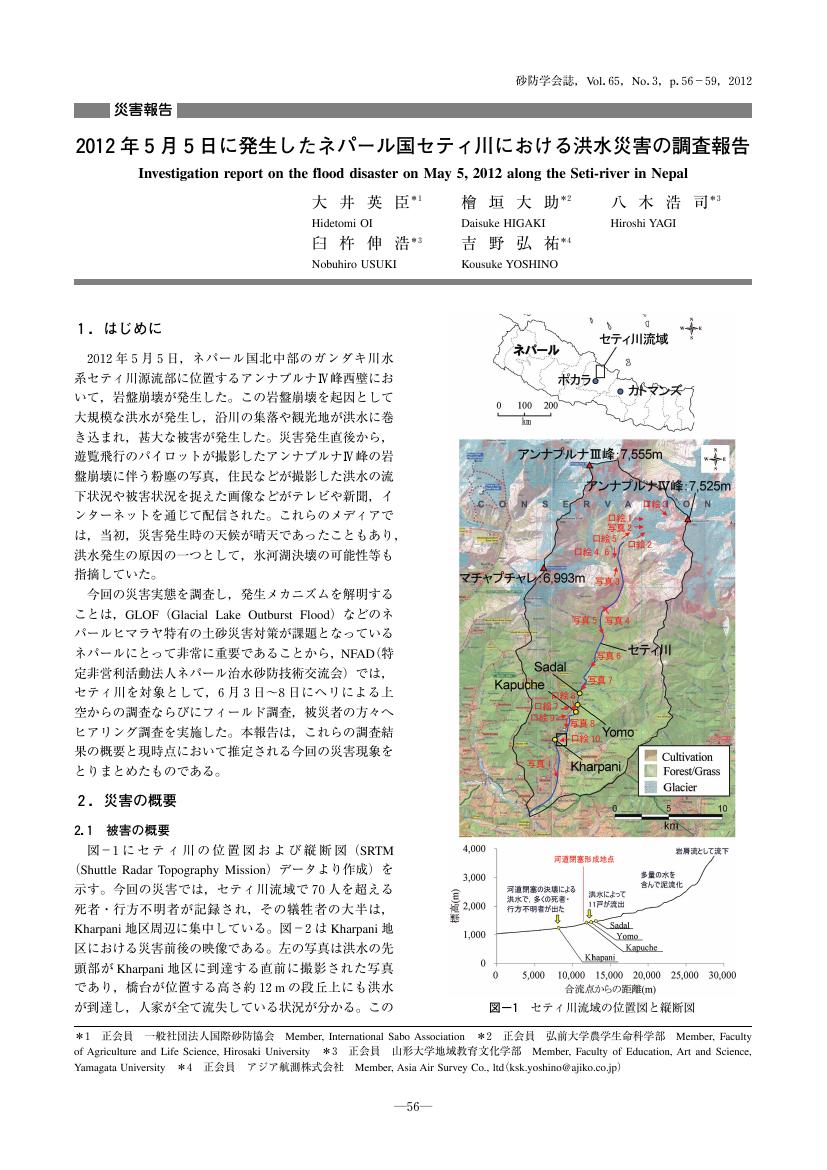1 0 0 0 OA 2012年5月5日に発生したネパール国セティ川における洪水災害の調査報告
- 著者
- 大井 英臣 檜垣 大助 八木 浩司 臼杵 伸浩 吉野 弘祐
- 出版者
- 公益社団法人 砂防学会
- 雑誌
- 砂防学会誌 (ISSN:02868385)
- 巻号頁・発行日
- vol.65, no.3, pp.56-59, 2012-09-15 (Released:2015-08-03)
- 参考文献数
- 1
- 被引用文献数
- 1
1 0 0 0 OA 斜面の力学的安定評価による深層崩壊発生斜面・範囲の予測可能性の検討
- 著者
- 吉野 弘祐 内田 太郎
- 出版者
- 公益社団法人 砂防学会
- 雑誌
- 砂防学会誌 (ISSN:02868385)
- 巻号頁・発行日
- vol.71, no.4, pp.13-19, 2018-11-15 (Released:2019-11-15)
- 参考文献数
- 22
- 被引用文献数
- 1
Typhoon Talas (T 1112) induced many rapid, deep-seated landslides in the Kii Peninsula. Previous studies have examined the role that geology and geological structure play within the occurrence of these rapid, deep-seated landslides. However, there is no single, widely used physical model to describe deep-seated rapid landslides. Thus, we propose a physically based model that describes the widening process in water channels that accompanies overtopping erosion during landslide dams. In the model, we assumed that channel widening was induced by the collapse of side slopes due to channel bed degradation. We used slope stability analysis to describe side-slope collapse. Additionally, we considered whether our model could describe valley development processes during deep-seated landslides due to overtopping erosion of landslide dams. This was included because both side-slope collapse and deep-seated landslides could be affected by a decrease in slope stability with slope height and angle. Thus, we examined whether our proposed model could be used to model overtopping erosion of landslide dams, to determine the location and area of deep-seated landslides. This study focused on slopes where Typhoon Talas caused deep-seated landslides ; we used detailed topological data (LiDAR) before and after Typhoon Talas to measure slope gradients and relative heights, to evaluate the applicability of our model.

